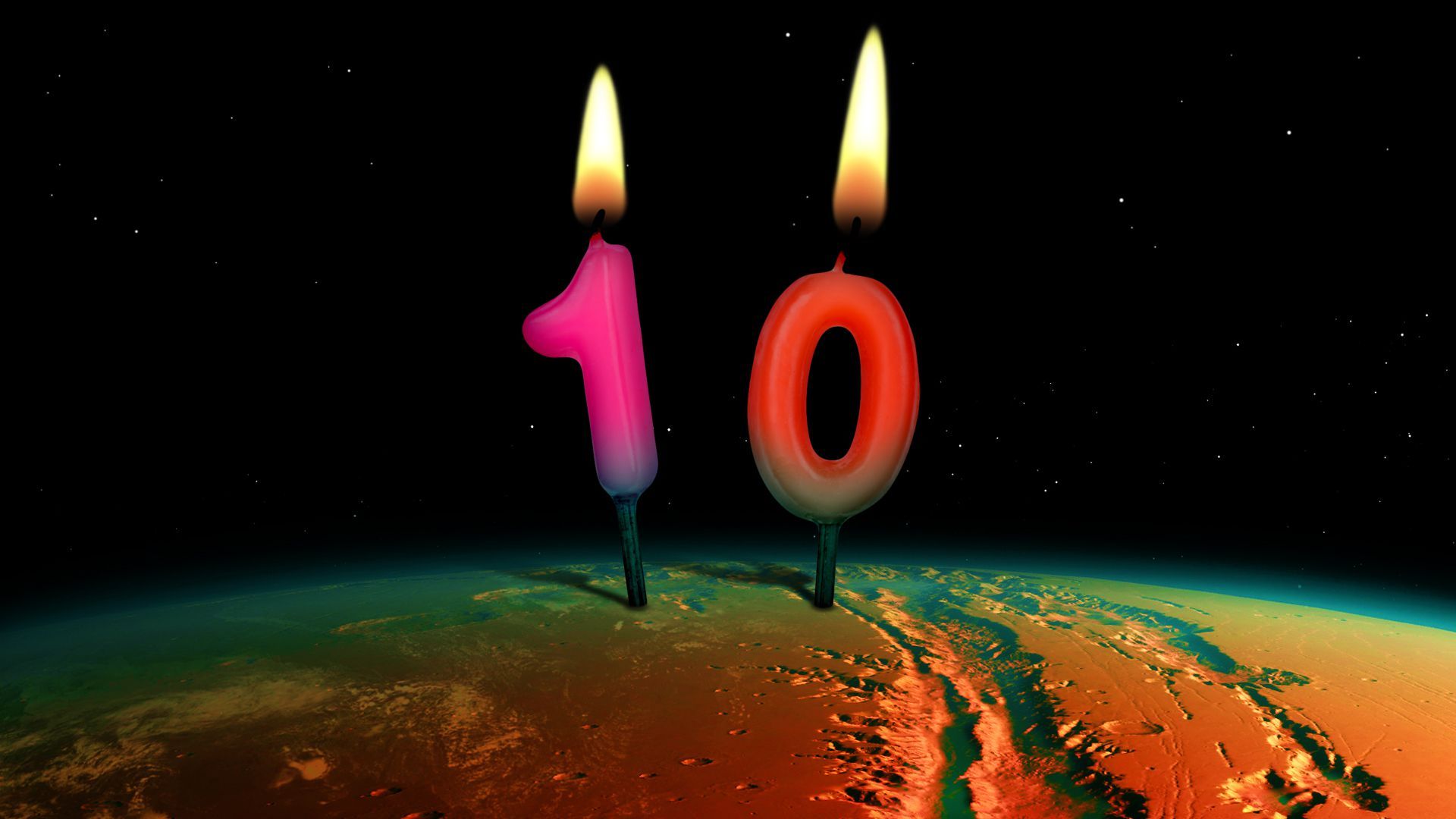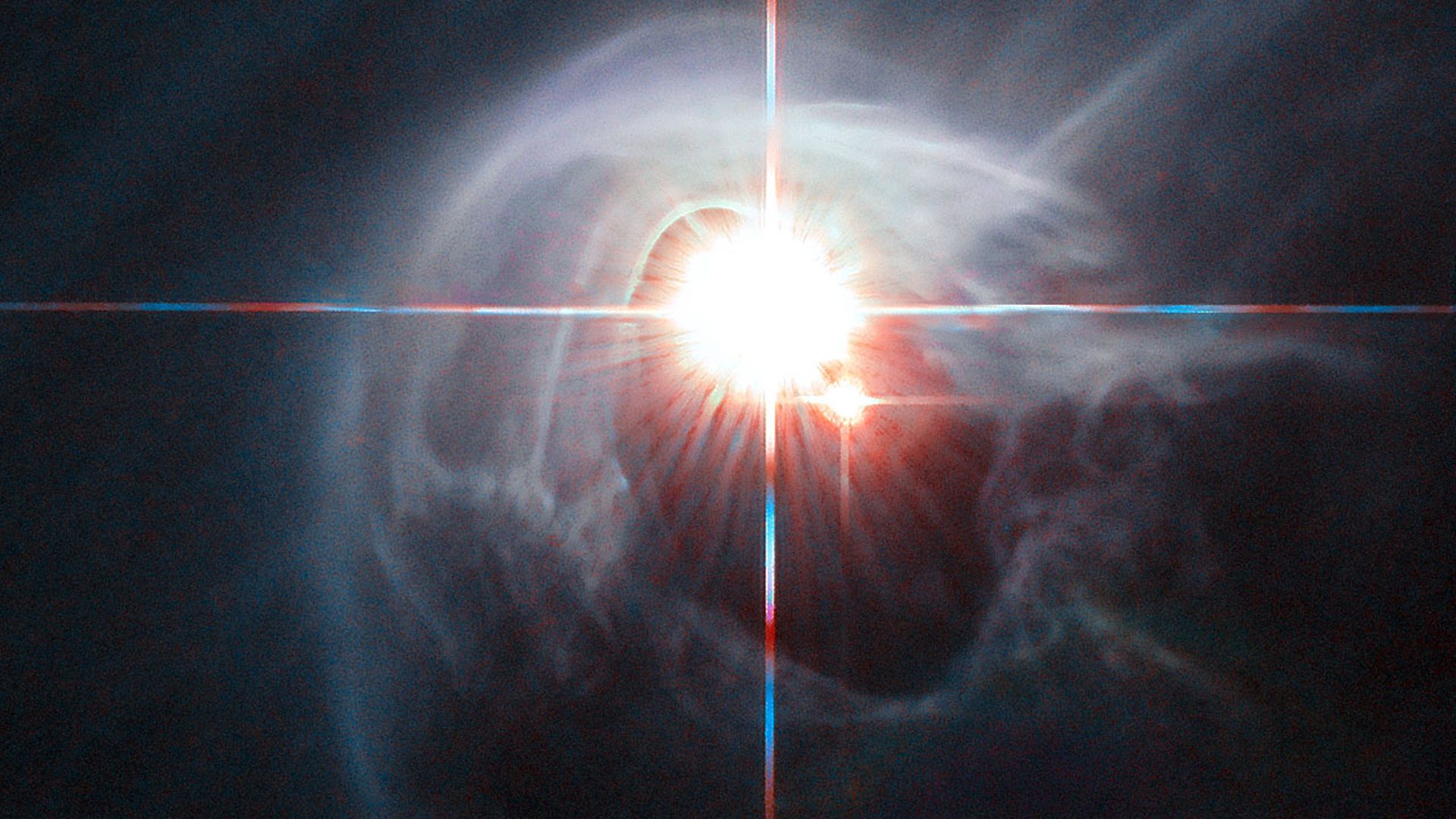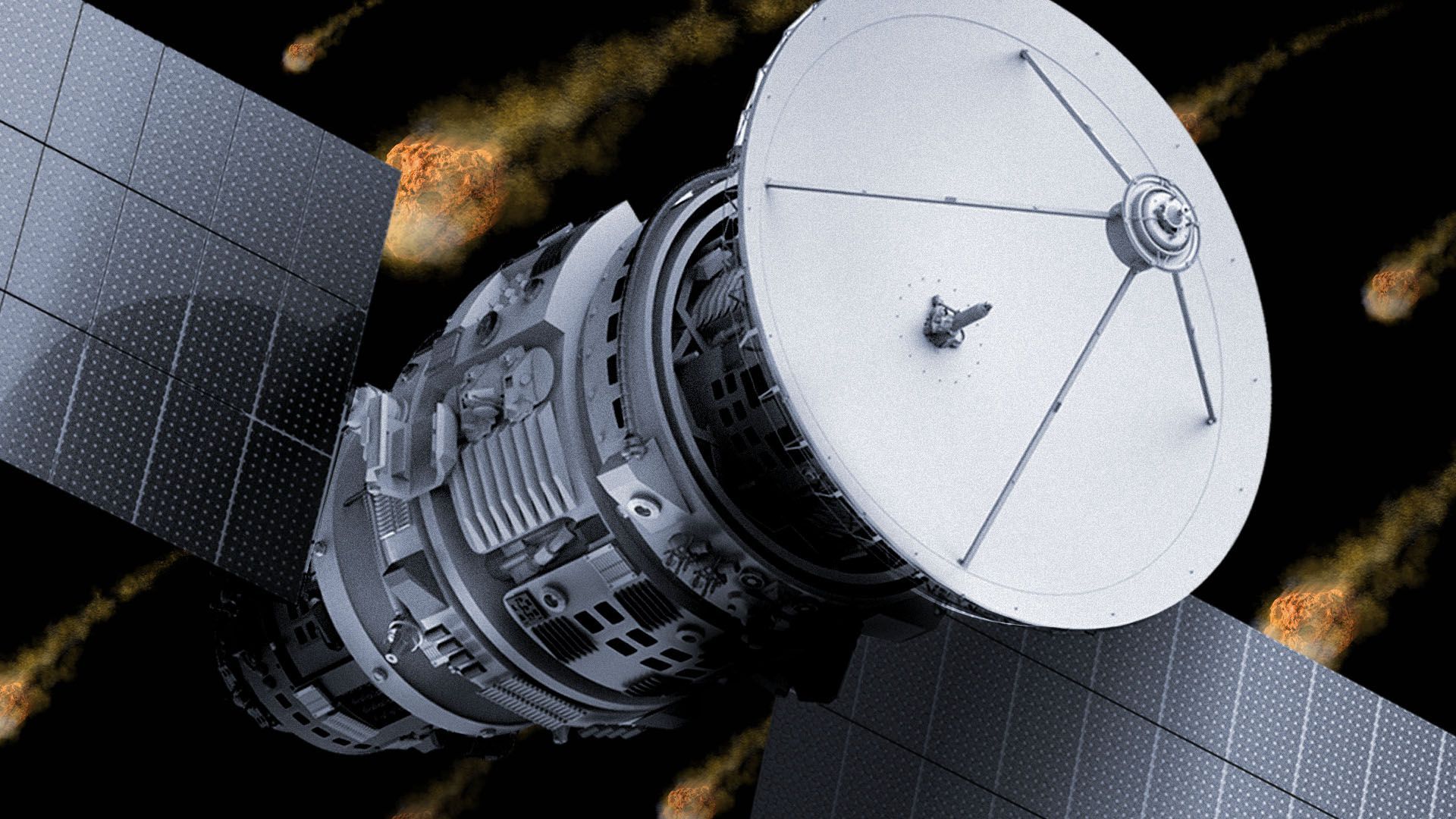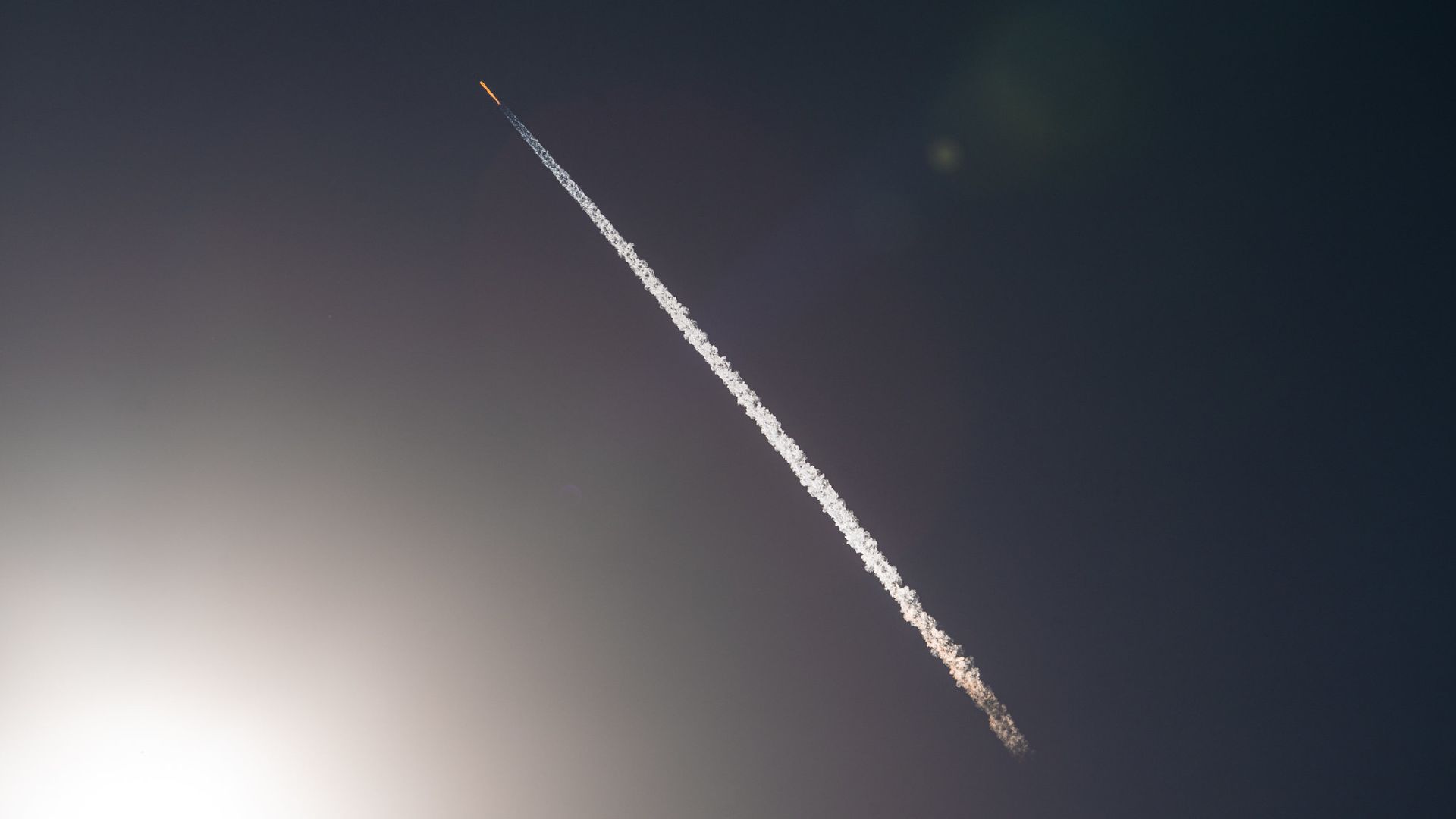| | | | | | | | | | | Axios Space | | By Miriam Kramer · Jul 26, 2022 | | Thanks for reading Axios Space. At 1,177 words, this newsletter is about a 4½-minute read. - I'm off on vacation, so this newsletter is taking a break next week. See y'all again on Aug. 9.
Please send your tips, questions and breaking Roscosmos news to miriam.kramer@axios.com, or if you received this as an email, just hit reply. | | | | | | 1 big thing: The coming end of the ISS |  | | | Illustration: Sarah Grillo/Axios | | | | Russia is planning to pull out of the International Space Station after 2024, potentially closing the book on the nation's close relationship with the U.S. in space. Why it matters: During times of high tension on Earth — like during Russia's annexation of Crimea in 2014 and today's ongoing war in Ukraine — space has often been one of the only open avenues of communication between the two nations. - It's also not clear if the space station can remain operational without Russia after 2024.
- NASA is planning to send astronauts to private space stations after the end of the ISS, but those stations likely won't be available until the late 2020s.
- This could leave NASA's astronauts somewhat stranded, with nowhere to go in low-Earth orbit as China gains its own foothold in orbit with its space station.
Driving the news: "The decision to leave the station after 2024 has been made," Yuri Borisov, the newly appointed head of Roscosmos — Russia's space agency — told Russian President Vladimir Putin, according to the Associated Press. - After 2024, Roscosmos is planning to focus on building its own space station.
- This plan is in line with other statements made by the previous head of Roscosmos, despite the fact that other ISS partners — like NASA — have pushed to keep the program going until the end of the 2020s.
- "They have been good partners as all of our partners are," Robyn Gatens, NASA's director of the International Space Station, said during remarks at a conference today. "And we want to continue together as a partnership to continue operating the space station through the decade."
- The news also comes after NASA and Russia announced seat swaps for the ISS where Russian cosmonauts will fly aboard SpaceX's Dragon capsules and NASA astronauts will fly aboard Russian Progress vehicles.
Yes, but: Any ISS partner that wants to pull out of the program needs to provide one year's notice and formal notification. - "We haven't received any official word from the partner as to the news today," Gatens said of Russia. "We'll be talking more about their plan going forward."
Between the lines: Russia's plans to leave the station after 2024 — if they come to fruition — could actually help solve a political challenge for the United States. - Continuing on with Russia as a partner in space could be a politically difficult thing to sell on the ground because of Moscow's actions in Ukraine.
- "If the Russians are pulling out, maybe that's sort of a silver lining for the U.S." Brian Weeden of the Secure World Foundation tells me.
What to watch: The Moon is quickly becoming the focal point of geopolitical intrigue in space as attention turns away from the ISS. - NASA is working with multiple ISS partners for its Artemis program to send people back to the lunar surface while also enlisting other nations to sign its Artemis Accords.
- Russia, on the other hand, has committed to partnering with China to build a research station on the Moon, rejecting the Artemis program.
|     | | | | | | 2. 10 years of Curiosity on Mars |  | | | Illustration: Maura Losch/Axios | | | | Over the past 10 years, NASA's Curiosity rover on Mars has upended how we understand the history of the Red Planet. Why it matters: Curiosity, set to mark its 10-year anniversary on Mars next week, has revealed that the Red Planet's atmosphere is thicker and the surface of the planet is far friendlier to life — with long lived-rivers and lakes — than expected, making the past Martian environment habitable for microbes (if not inhabited by them). What's happening: Curiosity had a prime mission for just two years when it landed on the Red Planet on Aug. 5, 2012. - But 10 years later, the mission continues, with the car-sized rover currently exploring Mount Sharp and getting a good look at the various layers of sediment set down within the large mountain's location in Gale Crater, the spacecraft's landing site.
- So far, Curiosity has driven 17.59 miles since landing in the crater.
The big picture: Curiosity represents a culmination of decades of hardware sent to Mars. - Earlier rovers like Opportunity or Sojourner were relatively simple machines that gathered important science but didn't have the analytical abilities of Curiosity.
What's next: Curiosity will build on its past science successes over the next three years on its newly extended mission. - In the immediate future, the rover is continuing its climb up Mount Sharp, with plans to go to an area where the nature of the geology of the mountain changes.
- "Pretty much everywhere we've explored on Mount Sharp to this point, there has been evidence of a lot of water in the ancient past. Most of the layers we've explored formed as mud at the bottom of ancient lakes," Ashwin Vasavada, Curiosity's project scientist, tells me.
- "Now we're about to switch maybe to something more like the opposite. Maybe the lakes will disappear forever in the historical record of Mount Sharp."
What to watch: "Things could change tomorrow, but we could have five to eight years," Andy Mishkin, of NASA's Jet Propulsion Laboratory, tells me. |     | | | | | | 3. A triple star system |  | | | A star system like the one detailed in this story with two sets of binary stars. Photo: NASA/ESA/STScI | | | | Scientists have discovered a special, massive triple star system like nothing they've seen before. Why it matters: By learning more about these types of star systems, astronomers are able to piece together a better idea of how stars and planets form throughout the universe. What they found: The system consists of two stars orbiting one another in a binary and the third orbiting the binary, according to a study published at the end of June in the Monthly Notices of the Royal Astronomical Society. - The two stars in the binary combined are 12 times larger than the Sun, and the third star is 16 times the mass of the Sun.
- "As far as we know, it is the first of its kind ever detected," Alejandro Vigna-Gómez, one of the authors of the study, said in a statement.
- "We know of many tertiary star systems (three star systems), but they are typically significantly less massive. The massive stars in this triple are very close together — it is a compact system."
The big picture: The scientists behind the discovery think that this system likely formed as two sets of binaries orbiting one another. - One of the stars in the outer binary then merged with its companion, leaving one massive star to orbit the other binary.
|     | | | | | | A message from Axios | | The podcast to power your day. | | |  | | | | Catch up on the biggest stories of the day and why they matter with the Axios Today podcast. Host Niala Boodhoo is joined by journalists from Axios' newsroom to unpack the stories shaping your world and the trends shaping our time. Listen for free. | | | | | | 4. Out of this world reading list |  | | | Illustration: Sarah Grillo/Axios | | | | Hunting for asteroids at twilight is turning up space rocks we normally wouldn't see (Loren Grush, The Verge) Roman Space Telescope top challenge for new NASA astrophysics director (Jeff Foust, SpaceNews) Wait begins for falling 23-ton rocket booster after China space station launch (Kenneth Chang and Jane Perlez, NY Times) Jupiter's rings may be so puny because of the planet's massive moons (Robert Lea, Space.com) |     | | | | | | 5. Weekly dose of awe: A SpaceX rocket launch |  | | | Photo: SpaceX | | | | Rocket launches are always something special. - This photo shows SpaceX's Falcon 9 rocket carrying a clutch of internet-beaming Starlink satellites to orbit as it launched on July 9.
- SpaceX broke its yearly launch record last week, on July 22, with another Starlink launch that brought the company's total for the year up to 32... and yes, it's only July.
|     | | | | | | A message from Axios | | The podcast to power your day. | | |  | | | | Catch up on the biggest stories of the day and why they matter with the Axios Today podcast. Host Niala Boodhoo is joined by journalists from Axios' newsroom to unpack the stories shaping your world and the trends shaping our time. Listen for free. | | | | Big thanks to Laurin-Whitney Gottbrath and Sheryl Miller for editing this week's edition. If this newsletter was forwarded to you, subscribe. 🚀 |  | | Are you a fan of this email format? It's called Smart Brevity®. Over 300 orgs use it — in a tool called Axios HQ — to drive productivity with clearer workplace communications. | | | | | | Axios thanks our partners for supporting our newsletters. If you're interested in advertising, learn more here.
Sponsorship has no influence on editorial content. Axios, 3100 Clarendon Blvd, Arlington VA 22201 | | | You received this email because you signed up for newsletters from Axios.
Change your preferences or unsubscribe here. | | | Was this email forwarded to you?
Sign up now to get Axios in your inbox. | | | | Follow Axios on social media:    | | | | | |
No comments